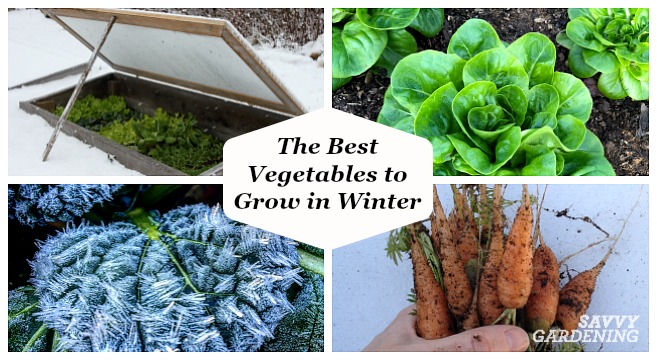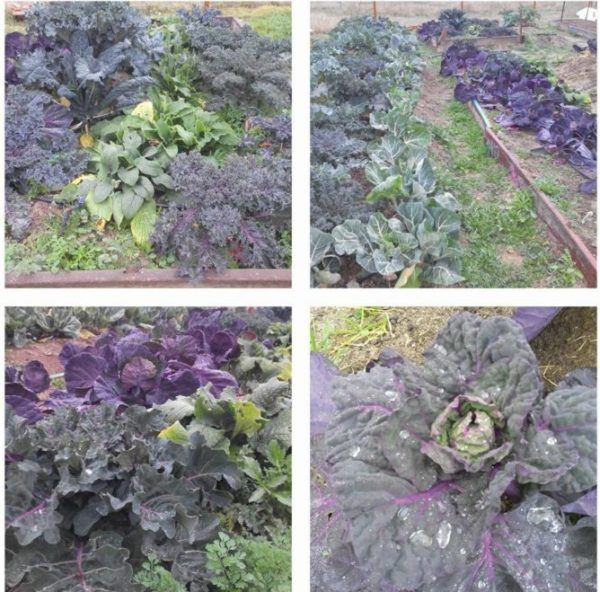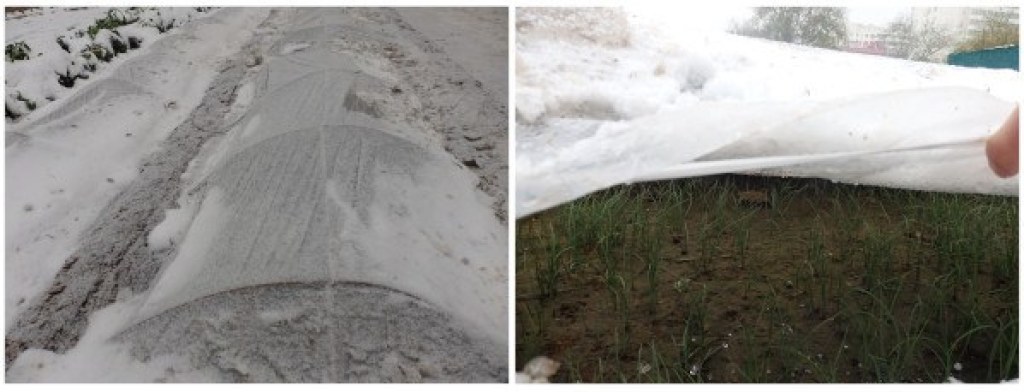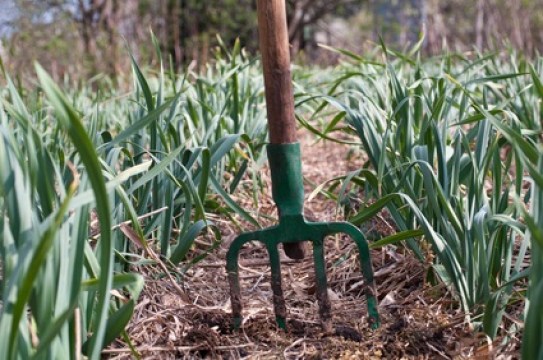Autumn – winter vegetables What to plant in winter in the garden?

Today we are going to talk about the garden in winter. Winter vegetables that can be planted during the cold season are a good option to not leave the garden abandoned during the fall and winter months.

If you think that the cultivation of strawberries, vegetables and other garden plants is an activity that you can only do in good weather and high temperatures, you are very wrong! Winter vegetables can also be grown successfully, as well as other cold-bearing plants that are useful for the garden, such as green manures or hedgerows.
winter vegetables
But… What are the vegetables that best resist low temperatures? What can be grown in autumn and winter and what is the planting schedule? In today’s post we will talk about all this!
We will see what the main winter crops are so that we can choose the most suitable plants that will be part of our garden during the cold seasons. In other words, we will talk about what to plant in September and successive months in the northern hemisphere or, what is the same, what to plant in March, April and the rest of the autumn and winter months in the countries of the southern hemisphere.
Advantages of cultivating the winter garden
A winter garden is something useful that we can do so as not to waste the terraces during the cold seasons. This way we will avoid, among other things, that they are filled with unwanted weeds and insects that, otherwise, we would have to eliminate later.
If we grow winter plants we can benefit from the advantages of growing a garden throughout the year, without losing a single month!
Also, most of the winter plants below are easy to grow and are not very demanding on nutrients, so they will not deplete the soil. What’s more, its roots will help keep it fluffy and loose for the next spring and summer crops. Even after harvesting the winter plants, we can use the crop residues to make homemade compost or crush the winter plants and bury them, so that they serve as fertilizer for the plants in the garden in spring and summer.
As we will see, there are winter crops that can be very useful to improve the state of the garden during the following seasons. For example, garlic, one of the most typical winter plants, can be used to prepare ecological insecticides against pests and diseases. Green manures are also a good option to grow in autumn and winter if we want to make an extra supply of nitrogen and other nutrients to the soil.
Another advantage of autumn and winter orchards is that, as it usually rains more in these seasons of the year and the temperatures are not so high, they do not need too much irrigation water.
Winter crops for the garden What can be planted?
Next we will see which are the vegetables and other vegetables that are most suitable for the autumn garden and for the winter garden. In other words, those plants resistant to low temperatures that we can grow from September (in the northern hemisphere) or from April (in the southern hemisphere), once the spring-summer crops have been removed. In reality, most of these crops are plants that can be grown year-round in the garden.

The choice of winter crops will depend on the minimum temperatures reached in the area and the resistance of each of the plants. It is important, therefore, to know the minimum temperatures that winter vegetables withstand (For this I will leave you the links to Agrohuerto articles that deal with the different autumn and winter crops, where you can read more information about the climate and the care that need).
These are the winter crops for the garden in a classification of plants according to their use:
Leaf, flower or stem vegetables
- Chard. How to grow chard at home. Cultivation and curiosities. File + Video.
- Celery. How to grow celery in the garden.
- Broccoli. Broccoli: Growing and Managing in the Garden.
- Cauliflower. How to grow cauliflower: sowing, planting and other care.
- Spinach. How to grow spinach in your garden.
- Lettuce. How to grow lettuce in the garden.
- Cabbage. Growing cabbage in the garden, everything you need to know.
root vegetables
- Radish. Radish, an easy crop also for beginners
- Beetroot. Growing beets in the organic garden
- Carrot. How to grow carrots at home
- Turnip. How to grow turnips in the garden
legumes
- Broad beans. Grow broad beans in the garden, when to sow and harvest?
- Green peas. Grow peas in the garden and in pots step by step
bulbs
- Garlic. How to plant garlic at home. When to plant garlic in a pot and in the garden
- Onion. Onion: the basics to learn how to grow it
Other winter plants for the garden
- Green manure plants. They are not horticultural crops like the ones we have just seen, that is, they will not be used to eat, but they will be used to fertilize the substrate and prepare the terraces for demanding crops such as cauliflower, strawberries, tomatoes or peppers.
- The wild fruit hedges. Plants such as blueberries or raspberries, of the bush type, are grown throughout the year and have advantages or benefits in the organic garden.
- Some types of winter squash (such as spaghetti squash or turban squash).
I wanted to make this classification of winter plants based on their type of use to make it easier to choose their placement in the garden. The placement of these winter crops in the different terraces will be done taking into account the plants that have been cultivated in the previous season (spring-summer) in each place, following the ecological technique of crop rotation.
It is also important to know that there are plants that should not be put together on the same terrace or cultivation table, because they are harmful associations (such as legumes with garlic or onions). Likewise, there are other beneficial crop associations, such as onions with carrots, as one helps repel pests from the other and vice versa.
Growing winter vegetables: how to protect plants from the cold
To grow winter vegetables, in addition to using cold-resistant varieties, we can protect plants from frost by installing windbreaks like these:

In addition, we can place a layer of mulching or padding on the ground to protect the soil, an ecological technique with many advantages for soil fertility and plant development.

These two tricks for growing in winter are not essential, but they will help you protect plants from the cold because they soften temperatures and will make crops more resistant to cold.
The Agro-garden in winter
If you want to know what happened to the winter plants that Álvaro planted, I recommend you visit the YouTube channel Agrohuerto TV, where you will find the following video, and many others, such as the one from the garden we visited in Beijing (China), where the tricks to the tricks they used for growing a winter garden in Beijing, China at several degrees below zero.
If you don’t want to have a winter garden but you do want to do something useful that will benefit the next spring-summer crops, I recommend reading this post where you will find 7 things we can do in the garden in winter, such as planting green manures to fertilize or Make homemade compost with the remains of previous crops.
References
- Brechelt, A., 2004. Ecological soil management. Agriculture and Environment Foundation (FAMA), Dominican Republic.
- Zoppolo, R. et al., 2008. Food in the garden. Guide for healthy production and consumption. National Institute of Agricultural Research (INIA). Uruguay.
- FAO, 2010. Frost Protection: Fundamentals, Practice and Economics. Food and Agriculture Organization of the United Nations (FAO), Environment, Climate Change and Bioenergy Publications, Environment and Natural Resources Management Series, Vol. 1

![Photo of How to Plant Macadamia Nuts in [8 Steps + Pictures]](https://www.complete-gardening.com/wp-content/uploads/2021/06/plantar-un-arbol-de-macadamia-390x220.png)
![Photo of Types of Cucumber: [Characteristics, Best Variety and Difference with Zucchini]](https://www.complete-gardening.com/wp-content/uploads/2022/08/types-of-cucumber-characteristics-best-variety-and-difference-with-zucchini-390x220.jpg)

![Photo of When to Grow Tulips: [Temperature and Hemisphere]](https://www.complete-gardening.com/wp-content/uploads/2022/08/when-to-grow-tulips-temperature-and-hemisphere-390x220.jpg)